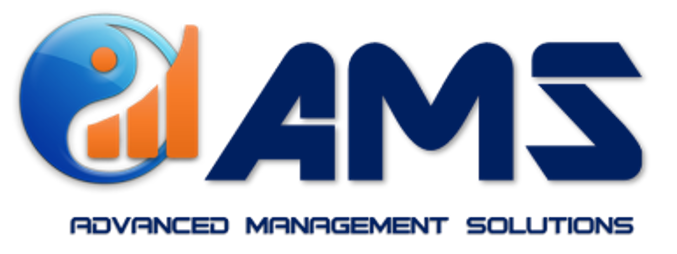Human resources (HR) metrics are used by employers to measure how their human capital-related costs and activities contribute to overall business performance. The critical aspect of developing and tracking HR metrics is to truly understand how your employees can best be channeled within the organization to maximize its impact.
1. Revenue Per Employee
Revenue per employee calculates the value of employees to your operations. This is just cost vs benefit of human capital. In this case, it is more about the math and value than any single person on your team.
Revenue per employee = Total revenue ÷ Total number of employees
There is no recommended range, as it could vary from $200 per day to thousands or more depending on your industry. What’s important is that, on average, employees bring in more than what it costs to hire them, but there may be considerations such as a startup situation or a salesperson that may not make their first big sale for months.
2. Cost Per Hire
Cost per hire is the average amount of money, resources, and time your company allocates toward making a hire. This metric attaches to a recruiting budget rather than a one-off recruitment.
As an example, a recruiting budget would determine that if your company plans to hire 10 people in a fiscal year and your cost per hire is $2,000, your budget should be earmarked for around $20,000. This would cover costs for recruiting, hiring, and onboarding the new employee.
It’s important to include all variable, direct, and indirect costs of each hire. This includes recruitment ads, background checks, onboarding and training costs, and even a proportional cost of your applicant tracking system (ATS), if the company has one.
Cost per hire = All recruiting and HR staffing costs ÷ Number of new hires
3. Employee and New Employee Turnover
Employee turnover is used to determine employee retention and how satisfied employees are at your company. As high as it may seem, a 20% turnover rate is considered to be around average within the United States. If you have the ability to make a concerted effort to lower that turnover percentage, a good goal to aim for is around 10% or less.
A high employee turnover rate is a costly part of the business to not have under control. Each time an employee departs from your organization, you dedicate the expense to recruit, interview, hire, onboard, and train them. The costs associated with employee turnover can be as high as 50% to 60% of an employee’s annual salary.
There are two types of employee turnover metrics to consider: employee turnover over a period of time and new employee turnover within 90 days.
Employee Turnover
To calculate employee turnover over a period, take your employee headcount, and divide that number by the number of employees who have attrited, regardless of reason, over a selected time (usually companies use calendar or fiscal years).
Turnover rate = Number of employee terminations ÷ Average number of employees
Employee Turnover: New Hires Who Leave Within 90 Days
To calculate this metric, divide the number of new hires who quit in the first 90 days by
the total number of new hires in that same time frame.
Percent of new hires that leave in 90 days = New hires who leave (within 90 days) ÷ Total number of new hires who leave x 100
4. Employee Productivity Rate
For 2021, this may be one of the more promoted HR metrics to track since many companies around the globe are moving from remote workforces as a benefit to that of a necessity.
Since remote workforces boomed in 2020, this shift in the workforce location and its expectations must be tracked to determine if the system is working and which employees this is working for and whom it is not.
Employee Productivity Rate of a single employee = Company revenue ÷ the number of employees on payroll
Comparing the numbers yielded in 2020 to previous years will help you assess how well your remote-based workforce-related changes are serving your organization.
If you find that productivity is steadily decreasing, it’s possible that employees may be overworked or dealing with other issues. It is especially important when managing remote employees to know how much time within a day or a week that an employee needs to actually be productive (include times for rest breaks, meal times, etc.).
5. Diversity and Inclusion
True diversity in your workforce involves more than just having better balance within your employee teams. It also means having people from all kinds of backgrounds and identities at every level of your organization. This goal also involves a conscious effort to diversify your teams and management.
One of the ways to measure your diversity and inclusion efforts is to send out anonymous employee surveys to your team. To track your metrics understand the percentage of diversity in your hiring.
People Group-specific Diversity Rate = Total Company Hires (within a timeframe) ÷ Categorized People Group Hires
Obviously, the traditional shortcomings of diversity failures of the past typically include underrepresented groups such as women and people of color. Still, these are only a few of many communities that are under-represented through the workforce so make sure you think about that as you consider your metrics.
6. Pay Equity
Pay equity is a means of eliminating sex and race discrimination in the wage-setting process within your company. The goal is to measure employee compensation so that it is fair, just, and equitable.
You can calculate equity standards by comparing variables such as employee performance, education, experience, and management or supervisory levels to ensure that employees in similar roles are paid equitably across gender, for example. To learn more, read our article on pay equity.
Glassdoor helps us with a straightforward way to truly assess and measure a company’s gender pay gap. This is best accomplished by analyzing the following: Average pay for men as a group compared to average pay for women as a group.
“Unadjusted” Gender Pay Gap = Average Male Pay – Average Female Pay ÷ Average Male Pay
7. Overtime Percentage
Calculating overtime as a percentage tells how efficiently you are managing your scheduling and overall full-time equivalent (FTE) staff. Employers know that overtime is expensive and do not want to pay it if at all possible (note that overtime is one-and-a-half times an employee’s standard pay, per hour worked).
To calculate overtime as a percentage, follow the formula below. This result will show you what percentage of your payroll was allocated to overtime costs.
Overtime percentage = Overtime pay amount ÷ Total payroll
8. Absenteeism
The cost of on-going employee absenteeism can be very misleading and hidden. However, the costs of absenteeism can impact your bottom line and company’s overall performance (including a drop in morale and unfinished projects that could impact customer satisfaction).
In order to get a grip on this common workplace challenge, you will have to measure it. A routine target that most organizations use for “acceptable” rates of absenteeism hovers around 2.8 percent.
Absenteeism = Work Days missed ÷ Total work days scheduled
9. Profit Per Employee
This next metric is an interesting one. This reflects profit per employee (PPE) based on your most recent 12 months. When you measure PPE, note to view the result as net income (thus “profit”). The equation is fairly simple, as it is the net profit from the most recent 12 months divided against the current number of FTE employees.
Profit per employee = Net profit (from the last 12 months) ÷ Number of FTE employees
For example, you may have added employees to your workforce but ensure that you remove their overhead costs when calculating PPE. This HR metric helps companies determine if their staffing levels are appropriate and if inefficiencies are hiding within parts of the company’s operations.
10. Healthcare Costs Per Employee
This metric helps you understand how much of your budget is being spent on employee health insurance costs. In 2019, the average cost of healthcare insurance, per employee for family coverage was $20,576. Of that amount, employees paid an average of $6,013 toward the cost of their healthcare coverage.
Since these related costs are continuing to increase each year, employees and employers alike are looking for ways to cut costs yet have rich benefits for team members and their families. Tracking this cost is the first step in determining how your company is spending its resources in a very expensive line item on the company’s profit and loss (P&L) statement.
To calculate this metric, sum up what you contribute to your employees’ health care premiums over a benefits year and divide it by the number of insured employees.
Health care costs per employee = Total health care costs ÷ Number of employees signed up for health care
11. Training Spend Per Employee
Assessing training spend per employee is critical, as it helps you determine how much money you spend on employee training throughout the year, compared to budget. Training Magazine reports that overall, within the United States, on average, companies spent $1,286 per learner in 2019, compared to $986 per learner in 2018.
Calculating this metric is fairly simple. First, determine the cost of your company’s overall employee training, along with all related costs—such as travel costs, course fees, and the cost of your learning management system (LMS). This number is divided against the total number of employees on payroll.
Training spend per employee = Total training costs divided by ÷ Number of employees
12. Training Return on Investment
While this requires a bit more number crunching, it answers the all-important question, “Is our training paying off?” To calculate this metric, you first assess overall employee productivity based on performance metrics. This metric often includes measures that come from sales performance of your team in a particular region or product line. This also should include an assessment of customer loyalty, either within a specific product or service line, or throughout the entire organization (this concept is also known as your net promoter scores (NPS).
Training return on investment (ROI) = Cost of employee training ÷ Value of increased performance
13. Employee Net Promoter Score
The employee Net Promoter Score (eNPS) is a scoring mechanism that is a subset of the original NPS when it first launched. Essentially, this metric assesses how willing your employees are to be ambassadors for your company or brand. Although every company needs to determine what is acceptable to them, HR Technologist reports that, generally speaking, a score within the bracket of 10 to 30 (out of 100) is considered a good score, while 50 is deemed to be excellent.
Employers can sort through this by asking a variation of rater questions, or “on a scale of zero to 10, how likely is it that you would recommend this company as a place to work?”
14. Cost of HR Per Employee
If you have an HR manager or another person on your staff who picks up HR-related duties, such as payroll or execution of new hire orientation and employee training, then this metric will help assess the overall cost of HR support. To best calculate, take the total compensation of your HR team members, or the portion of the job of the person who manages these HR duties, and divide by the number of employees on payroll.
Cost of HR per employee = Total HR salary and benefits ÷ Number of employees
Generally speaking, small to medium-sized companies average one HR FTE for every 100–150 employees. As an organization gets larger, this ratio changes, with HR professionals taking on more specific specialties such as subject matter expert (SME) roles in your HR department.
15. Employee Referral Program Success
Although a little more challenging to track, we happen to be big believers in employee referral programs. Statistics show that they bring us the best employees over time. If you have not created one, take time to prepare it, and then communicate the policy (which usually includes employee referral bonuses) to your organization. Referral programs, as one part of your recruitment strategy, help create a pipeline of qualified employees. To calculate, use the number of positions you have had open and the number of referrals you have interviewed, found qualified, and hired.
Employee referral program success = Number of referrals ÷ Number of open jobs resulting in referred hires
Social Talent reports that, on average, 47% of job candidates hired from an employee referral from within your organization remain employed longer, up to three years, than employees who are not referred. Comparatively, only 14% of new hires yielded from job boards stay with the company during the same length of time.
Author:
Patrick Proctor, SHRM-SCP, is certified as a Senior Professional in Human Resources






